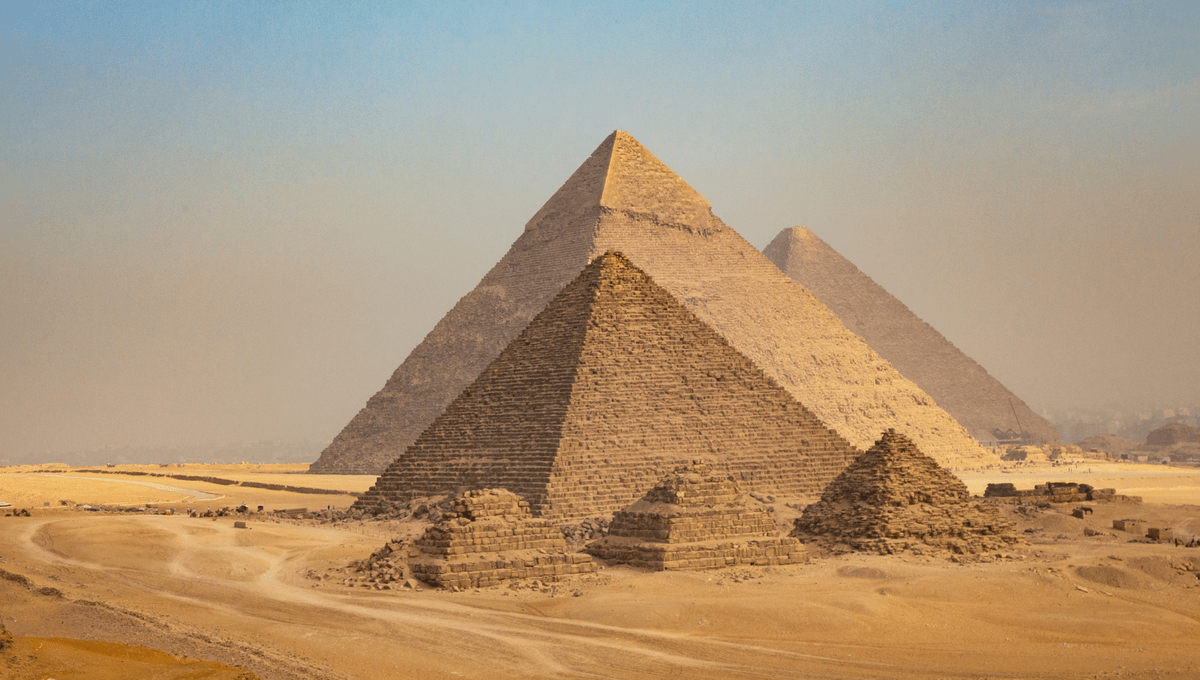
Was the Garden of Eden based on a real place? And if so, where exactly might it have been? These questions have puzzled biblical scholars for centuries. Now, a new study using computational analysis enters the ring with a sensational claim that the Garden of Eden was in Egypt and the Great Pyramid of Giza is closely associated with the “Tree of Life”. An early warning, though: the study author uses some – ahem – fairly unorthodox methods to reach these findings.
The Garden of Eden is a mystical place, rich with symbolism and spiritual significance, often seen as the origin of humanity and a lost paradise where we left behind our innocence. Although steeped in legend, some scholars have claimed it is based on a real geographical location, just like many cities and sites in ancient religious texts of Abrahamic religions.
The Hebrew Bible and the Christian Old Testament suggest the Garden of Eden was located where four rivers meet. Genesis 2:10–14 reads: “And a river went out of Eden to water the garden; and from thence it was parted, and became four heads.”
It continues: “The name of the first is Pishon; that is it which compasseth the whole land of Havilah, where there is gold; and the gold of that land is good; there is bdellium and the onyx stone. And the name of the second river is Gihon; the same is it that compasseth the whole land of Cush. And the name of the third river is Tigris; that is it which goeth toward the east of Asshur. And the fourth river is the Euphrates.”
We know two of these rivers today: the Tigris and Euphrates start in Turkey before flowing through Syria and Iraq and emptying into the Persian Gulf. However, it’s unclear what the names Pishon and Gihon are referring to.
In a new study, Dr. Konstantin Borisov, a computer engineer, puts forward a new hypothesis after studying medieval maps, ancient texts, biblical quotations, and computer simulations.
He argues that Gihon is likely referring to the River Nile in Egypt, which is an idea that has been previously speculated over the centuries. Borisov writes: “Examining the Hecataeus Mappa Mundi reconstruction map from around 500 BCE, it becomes apparent that the only four rivers emerging from the surrounding Oceanus are the Nile, the Tigris, the Euphrates, and the Indus.”
This is where things quickly nosedive into the realm of pseudoarchaeology. The paper says the maps show Eden is located beside the encircling “Oceanus River”, a symbolic “sky river” that gave rise to the four rivers. This may be referring to the aurora borealis, the natural phenomenon that creates beautiful ribbons of green and purple swirls in the night sky.
At the same time, Borisov speculates, it could link to an alleged global alignment of ancient archeological wonders – such as the Pyramids of Giza, Machu Picchu, Ur, and the Nazca lines – which form a belt that “crosses the equator at an angle of approximately 30 degrees.”
“Hypothetically, this path could be considered a plausible candidate for the ‘Sky River Oceanus’. It is reasonable to presume that cultures would congregate closer to this path due to its perceived religious significance,” the study reads.
He then goes on to say this underpins “the need for a structure capable of producing aurora-like light,” which he suggests may be the Great Pyramid of Giza. Going further down the rabbit hole, he cites simulations of the King’s Chamber within the pyramid that, according to him, reveal patterns resembling a glowing tree when struck with light.
From this, he makes the bold assertion that the Tree of Life from the Garden of Eden is, in fact, the Great Pyramid of Giza.
“In ancient cultures, Egyptian, Akkadian, Assyrian, Babylonian, Indian, Persian, Chinese, and Greek, there existed a concept of the sacred mountain of the world upon which the tree of life was believed to be situated. This discussion ultimately leads to the conclusion that the sacred mount, where the tree of life is said to reside, can only be the Great Pyramid of Giza. Additionally, the location of Eden is specifically pinpointed to Giza, as no other structure worldwide encapsulates the significant characteristics outlined above,” the study explains.
Ok, so there’s a lot to take in there, but you should be healthily skeptical when interpreting massive claims like this. Extraordinary claims require extraordinary evidence, as the old mantra of Carl Sagan goes.
The paper draws on many ideas, like “Prehistoric Alignment of World Wonders”, which are not taken seriously by most academic archaeologists. While the study’s claims are bold and imaginative, they lean heavily on speculative links and symbolic interpretations rather than empirical evidence.
The idea that the Great Pyramid of Giza is the Tree of Life may be an intriguing twist in the age-old Eden debate, but for now, it belongs more to the realm of mythic reinterpretation than mainstream archaeology.
The new study is published in the journal Archaeological Discovery.
Source Link: The Garden Of Eden In Ancient Egypt? An Offbeat Study Links Pyramids To Biblical "Tree Of Life"